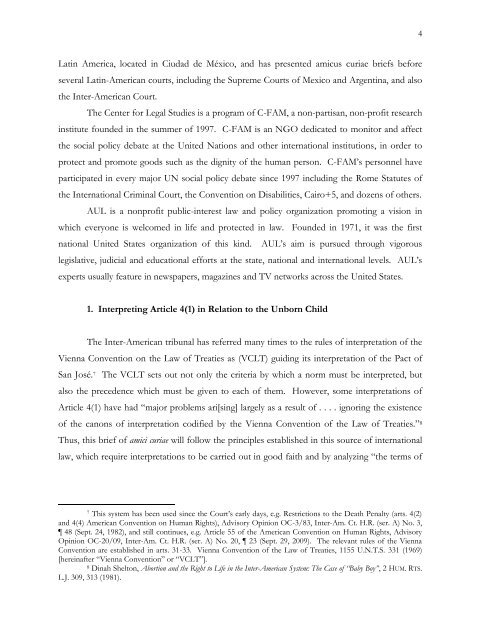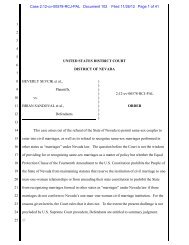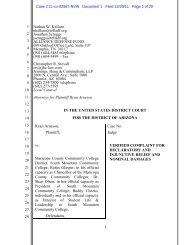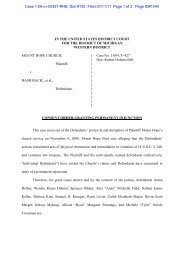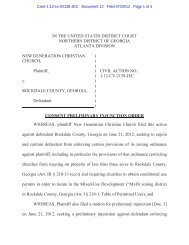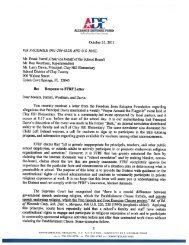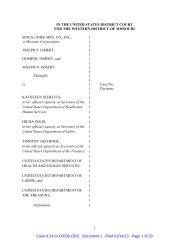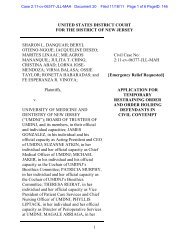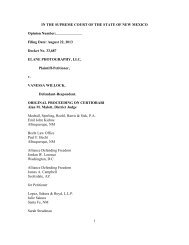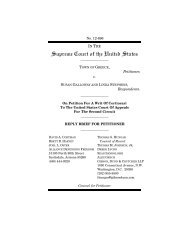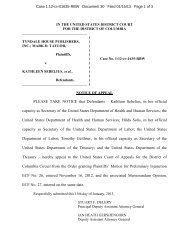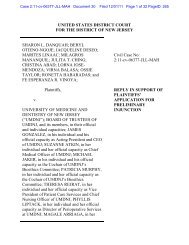English - Alliance Defending Freedom Media
English - Alliance Defending Freedom Media
English - Alliance Defending Freedom Media
You also want an ePaper? Increase the reach of your titles
YUMPU automatically turns print PDFs into web optimized ePapers that Google loves.
4<br />
Latin America, located in Ciudad de México, and has presented amicus curiae briefs before<br />
several Latin-American courts, including the Supreme Courts of Mexico and Argentina, and also<br />
the Inter-American Court.<br />
The Center for Legal Studies is a program of C-FAM, a non-partisan, non-profit research<br />
institute founded in the summer of 1997. C-FAM is an NGO dedicated to monitor and affect<br />
the social policy debate at the United Nations and other international institutions, in order to<br />
protect and promote goods such as the dignity of the human person. C-FAM’s personnel have<br />
participated in every major UN social policy debate since 1997 including the Rome Statutes of<br />
the International Criminal Court, the Convention on Disabilities, Cairo+5, and dozens of others.<br />
AUL is a nonprofit public-interest law and policy organization promoting a vision in<br />
which everyone is welcomed in life and protected in law. Founded in 1971, it was the first<br />
national United States organization of this kind. AUL’s aim is pursued through vigorous<br />
legislative, judicial and educational efforts at the state, national and international levels. AUL’s<br />
experts usually feature in newspapers, magazines and TV networks across the United States.<br />
1. Interpreting Article 4(1) in Relation to the Unborn Child<br />
The Inter-American tribunal has referred many times to the rules of interpretation of the<br />
Vienna Convention on the Law of Treaties as (VCLT) guiding its interpretation of the Pact of<br />
San José. 7 The VCLT sets out not only the criteria by which a norm must be interpreted, but<br />
also the precedence which must be given to each of them. However, some interpretations of<br />
Article 4(1) have had “major problems ari[sing] largely as a result of . . . . ignoring the existence<br />
of the canons of interpretation codified by the Vienna Convention of the Law of Treaties.” 8<br />
Thus, this brief of amici curiae will follow the principles established in this source of international<br />
law, which require interpretations to be carried out in good faith and by analyzing “the terms of<br />
7 This system has been used since the Court’s early days, e.g. Restrictions to the Death Penalty (arts. 4(2)<br />
and 4(4) American Convention on Human Rights), Advisory Opinion OC-3/83, Inter-Am. Ct. H.R. (ser. A) No. 3,<br />
48 (Sept. 24, 1982), and still continues, e.g. Article 55 of the American Convention on Human Rights, Advisory<br />
Opinion OC-20/09, Inter-Am. Ct. H.R. (ser. A) No. 20, 23 (Sept. 29, 2009). The relevant rules of the Vienna<br />
Convention are established in arts. 31-33. Vienna Convention of the Law of Treaties, 1155 U.N.T.S. 331 (1969)<br />
[hereinafter “Vienna Convention” or “VCLT”].<br />
8 Dinah Shelton, Abortion and the Right to Life in the Inter-American System: The Case of “Baby Boy”, 2 HUM. RTS.<br />
L.J. 309, 313 (1981).


